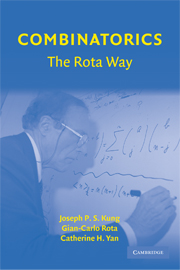74 results
Electron Transfer Processes Between Hydroquinone and Hausmannite (Mn3O4)
-
- Journal:
- Clays and Clay Minerals / Volume 36 / Issue 4 / August 1988
- Published online by Cambridge University Press:
- 02 April 2024, pp. 297-302
-
- Article
- Export citation
Electron Transfer Processes Between Hydroquinone and Iron Oxides
-
- Journal:
- Clays and Clay Minerals / Volume 36 / Issue 4 / August 1988
- Published online by Cambridge University Press:
- 02 April 2024, pp. 303-309
-
- Article
- Export citation
Employees’ mindset matters: Leveraging cultural mindset to harness the benefits of organizational polyculturalism
-
- Journal:
- Industrial and Organizational Psychology / Volume 16 / Issue 3 / September 2023
- Published online by Cambridge University Press:
- 31 August 2023, pp. 408-412
-
- Article
-
- You have access
- Open access
- HTML
- Export citation
Depression and cognitive impairment in the elderly: a multicentre study
-
- Journal:
- European Psychiatry / Volume 10 / Issue 2 / 1995
- Published online by Cambridge University Press:
- 16 April 2020, pp. 61-74
-
- Article
- Export citation
12 - Wisdom As State versus Trait
- from Part II - Conceptions of Wisdom
-
-
- Book:
- The Cambridge Handbook of Wisdom
- Published online:
- 15 March 2019
- Print publication:
- 21 March 2019, pp 249-274
-
- Chapter
- Export citation
Preliminary report on the engineering development of the Magnus Aerospace Corp. LTA 20-1 heavy-lift aircraft
-
- Journal:
- The Aeronautical Journal / Volume 87 / Issue 864 / April 1983
- Published online by Cambridge University Press:
- 04 July 2016, pp. 119-131
-
- Article
- Export citation
Correlation between liver cirrhosis and risk of death from oral cancer: Taiwan cohort study
-
- Journal:
- The Journal of Laryngology & Otology / Volume 130 / Issue 6 / June 2016
- Published online by Cambridge University Press:
- 10 May 2016, pp. 565-570
- Print publication:
- June 2016
-
- Article
- Export citation
Ultra-high precision CMMs and their associated tactile or/and optical scanning probes
-
- Journal:
- International Journal of Metrology and Quality Engineering / Volume 5 / Issue 2 / 2014
- Published online by Cambridge University Press:
- 09 October 2014, 204
- Print publication:
- 2014
-
- Article
- Export citation
13 - Physical dynamics and biogeochemistry of the Pearl River plume
- from Section III - Eastern hemisphere systems
-
-
- Book:
- Biogeochemical Dynamics at Major River-Coastal Interfaces
- Published online:
- 05 November 2013
- Print publication:
- 28 October 2013, pp 321-352
-
- Chapter
- Export citation
List of Contributors
-
-
- Book:
- Biogeochemical Dynamics at Major River-Coastal Interfaces
- Published online:
- 05 November 2013
- Print publication:
- 28 October 2013, pp ix-xii
-
- Chapter
- Export citation
A Study on the Flow Patterns of a Second Grade Viscoe-Lastic Fluid Past a Cavity in a Horizontal Channel
-
- Journal:
- Journal of Mechanics / Volume 29 / Issue 2 / June 2013
- Published online by Cambridge University Press:
- 20 December 2012, pp. 207-215
- Print publication:
- June 2013
-
- Article
- Export citation
Repetitive semiconductor opening switch and application to short pulse generation
-
- Journal:
- Laser and Particle Beams / Volume 7 / Issue 3 / August 1989
- Published online by Cambridge University Press:
- 09 March 2009, pp. 615-626
-
- Article
- Export citation
Some new results for the Lagrange polynomials in several variables
-
- Journal:
- The ANZIAM Journal / Volume 49 / Issue 2 / October 2007
- Published online by Cambridge University Press:
- 17 February 2009, pp. 243-258
-
- Article
-
- You have access
- Export citation
Bibliography
-
- Book:
- Combinatorics: The Rota Way
- Published online:
- 05 June 2012
- Print publication:
- 09 February 2009, pp 369-388
-
- Chapter
- Export citation
3 - Partially Ordered Sets and Lattices
-
- Book:
- Combinatorics: The Rota Way
- Published online:
- 05 June 2012
- Print publication:
- 09 February 2009, pp 106-177
-
- Chapter
- Export citation
5 - Symmetric Functions and Baxter Algebras
-
- Book:
- Combinatorics: The Rota Way
- Published online:
- 05 June 2012
- Print publication:
- 09 February 2009, pp 222-271
-
- Chapter
- Export citation
Preface
-
- Book:
- Combinatorics: The Rota Way
- Published online:
- 05 June 2012
- Print publication:
- 09 February 2009, pp ix-xii
-
- Chapter
- Export citation
Contents
-
- Book:
- Combinatorics: The Rota Way
- Published online:
- 05 June 2012
- Print publication:
- 09 February 2009, pp vii-viii
-
- Chapter
- Export citation
Frontmatter
-
- Book:
- Combinatorics: The Rota Way
- Published online:
- 05 June 2012
- Print publication:
- 09 February 2009, pp i-vi
-
- Chapter
- Export citation

Combinatorics: The Rota Way
-
- Published online:
- 05 June 2012
- Print publication:
- 09 February 2009



